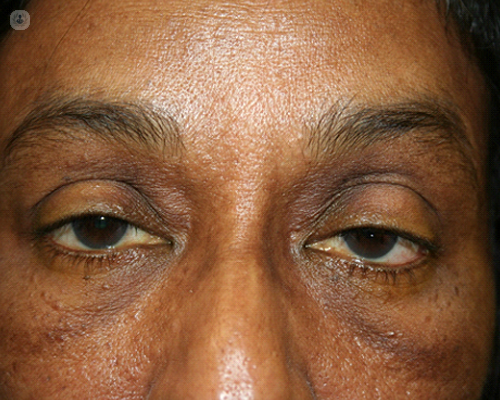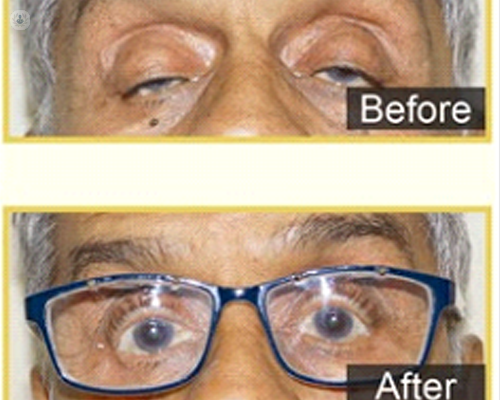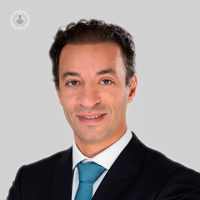Drooping or falling of the upper eyelid: All about ptosis
Written by:Ptosis, or blepharoptosis, is an upper eyelid condition that, as well as causing a lack of confidence in some people, can develop to the point where it affects people’s field of vision.
Thankfully, it’s possible to fix it in the hands of a highly-trained expert such as Mr Radwan Almousa, a skilled consultant ophthalmologist. He speaks to Top Doctors about how ptosis occurs, treatment options and the high standards required for procedures regarding the condition.

Why does ptosis (a droopy eyelid) happen?
Usually, ptosis develops as a result of gradual disinsertion of the muscle responsible for upper lid lifting (the levator muscle) from the eyelid lid platform (the tarsus), which gives the eyelid its contour.
The main reason for levator muscle disinsertion is involutional (age-related). Sometimes, chronic mechanical rubbing, like in the case of patients wearing contact lenses, could also cause ptosis.
If ptosis appears at birth, it is classes as congenital ptosis, and this is usually due to poorly-developed levator muscles rather than disinsertion.
Does ptosis happen suddenly or gradually?
Involutional ptosis (age related) usually develops slowly over years. If the ptosis appears suddenly, it could be due to mechanical reasons, like in the swelling of eyelids due to inflammatory or allergic conditions.
In case of sudden ptosis without lid swelling, this could be related to nerve palsy (the third nerve), which needs to be dealt with urgently.
Does ptosis usually affect one or both eyes?
It usually affects both eyes to a different degree, however the less-affected eye might appear normal due to compensated frontal muscle action that a patient would be using to lift the eyelids.
In case of nerve paralysis, it is usually one side.
What happens if ptosis is left untreated?
In early stages, ptosis might be asymptomatic and as the condition worsen, the patient would start to notice the abnormal eyelid shape with droopy eyelid and hollowness between the brow and the upper lid margin. As the case worsens, the visual fields start to be constricted superiorly (in or to a more superior position or direction), especially when reading, as the upper eyelid covers the visual axis.

What non-surgical treatments fix ptosis?
The non-surgical treatments for ptosis are usually temporary like eyelid crutches that are attached to a spectacle. Also, transparent tapes could be used to tape the eyelid open.
What surgical treatments fix ptosis?
Surgical treatment for ptosis is highly successful and it involves reinserting the levator muscle back to the tarsus, and that could be achieved from the skin, especially when the ptosis surgery is combined with blepharoplasty to remove excess redundant skin from the upper lid.
Also, the surgery could be done from the inside of the eyelid to avoid skin scar.
Congenital ptosis is treated by connecting the upper-lid platform to the frontal muscle or shortening the levator muscle.
Which ptosis treatment is most effective?
Surgical treatment is the ultimate treatment for ptosis. Both anterior approach (from the skin) or posterior approach are equally effective in treatment for involutional age-related ptosis.
What should I look for in a surgeon who performs ptosis surgery?
When searching for a ptosis surgical treatment, it needs to be done by an eye surgeon that has had clinical training in oculoplastics through a proper fellowship. This is because safe and successful surgery needs very good knowledge in eyelid anatomy, which is a very unique area.
Looking for a consultation with an expert regarding ptosis or other eye conditions? Visit Mr Almousa’s Top Doctors profile, here, to arrange a visit to one of his clinics.
*Photos are of Mr Almousa’s patients


